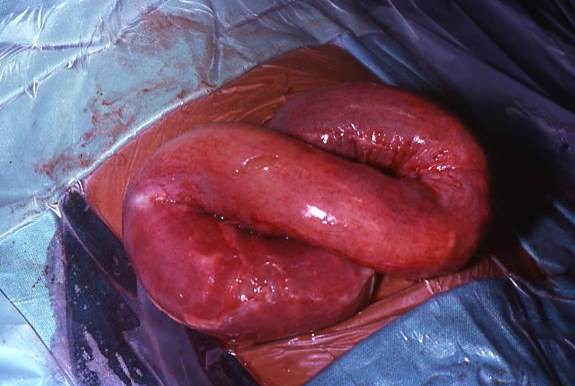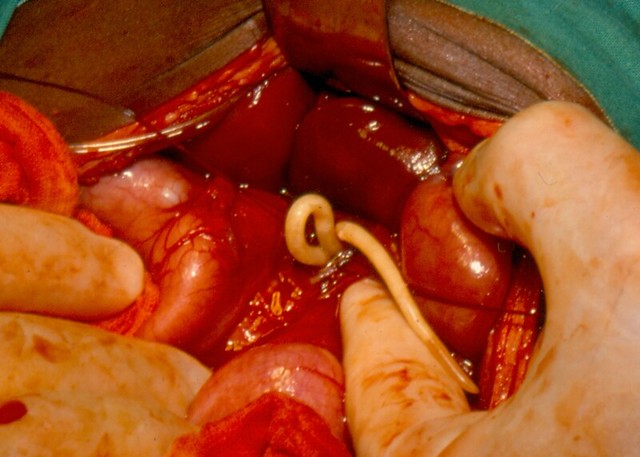- Forum
- categories
- Health and hygiene, schools and other non-household settings
- Health issues and connections with sanitation
- Neglected tropical diseases (NTDs), intestinal worm infections (helminthiases)
- Around 2 billion people infected with worms (helminths) - so why are there so few clinical photos available?
Around 2 billion people infected with worms (helminths) - so why are there so few clinical photos available?
10.9k views
- caetano
-

- Caetano Dorea is an Associate Professor at the University of Victoria where he leads the Public Health & Environmental Engineering (PH2E) Lab, Canada’s only research group primarily dedicated to water, sanitation, and hygiene (WASH). His interests and expertise are at the crossroads of environmental and public health engineering.
Re: Around 2 billion people infected with worms (helminths) - so why are there so few clinical photos available?
I think the WHO used to produce a CD with a collection/electronic library of publications around water, sanitation and health. If I am not mistakened, this CD also contained pictures and also some videos that are along the lines of what you are looking for. I think I still have this (somewhere) in my office. I will look out for it.
Cheers,
Caetano
Cheers,
Caetano
Caetano
University of Victoria
University of Victoria
Please Log in to join the conversation.
You need to login to reply- Elisabeth
-
Topic Author
- User is blocked
- Freelance consultant since 2012
Less- Posts: 3372
- Karma: 54
- Likes received: 932
Re: Around 2 billion people infected with worms (helminths) - so why are there so few clinical photos available?
Hi Mughal,
Thanks for raising this concern. I am the last one who wants to violate our forum rule's about not posting off-topic posts (see rule 8 here: forum.susana.org/forum/rules). It is indeed very important to stay on topic.
Naturally, with photos that cover medical issues, it is getting close to border-line. However, let me explain why I think these photos are relevant for this forum:
A disease that affects 2 billion people and that is mainly caused by lack of sanitation needs to be publicised more widely - also on this forum - don't you think?
How did we manage to eradicate intestinal worms in the countries on the North? Yes, our colder climate had something to do with it. But a major factor was also better sanitation and hygiene.
And finally, why do we talk about stunted growth in children on this forum, and WASH and nutrition, environmental enteropathy and so forth (forum.susana.org/forum/categories/92-nutrition-and-wash) - one could also argue that these are "medical" topics that stray too far away from sanitation topics. I don't think so. Same issue as the one for helminths - it is about raising awaress about the linkages between lack of sanitation and these diseases / conditions.
Greetings,
Elisabeth
Thanks for raising this concern. I am the last one who wants to violate our forum rule's about not posting off-topic posts (see rule 8 here: forum.susana.org/forum/rules). It is indeed very important to stay on topic.
Naturally, with photos that cover medical issues, it is getting close to border-line. However, let me explain why I think these photos are relevant for this forum:
- Helminth infections are a burden for about 2 billion people of the world, mostly children and poor people. The main cause of helminth infection is lack of sanitation!
- If there was more awareness about this disease (particularly in the global North), people will hopefully be more willing to support their governments to spend tax-payers money on improving the sanitation situation in developing countries.
- You have to realise that e.g. in Europe, helminth infections in people are pretty much unheard of - the general public has no clue what this is. We only know about them from our pets, perhaps people know about them who are into farming (horses also get worms) and maybe the odd pediatrician sees them here and there in children - but very, very rare! (actually I was told that in the US, helminth infections are not as rare as one would expect; this could be due to relatively high poverty levels or people moving in from Latin America (?)).
- Helminth infections really are very much a neglected tropical disease.
- To impress people with a sense of urgency to improve sanitation worldwide, I think they need to see such kind of photos, e.g. when they browse on Wikipedia.
A disease that affects 2 billion people and that is mainly caused by lack of sanitation needs to be publicised more widely - also on this forum - don't you think?
How did we manage to eradicate intestinal worms in the countries on the North? Yes, our colder climate had something to do with it. But a major factor was also better sanitation and hygiene.
And finally, why do we talk about stunted growth in children on this forum, and WASH and nutrition, environmental enteropathy and so forth (forum.susana.org/forum/categories/92-nutrition-and-wash) - one could also argue that these are "medical" topics that stray too far away from sanitation topics. I don't think so. Same issue as the one for helminths - it is about raising awaress about the linkages between lack of sanitation and these diseases / conditions.
Greetings,
Elisabeth
Dr. Elisabeth von Muench
Freelance consultant on environmental and climate projects
Freelance consultant on environmental and climate projects
Please Log in to join the conversation.
You need to login to replyRe: Around 2 billion people infected with worms (helminths) - so why are there so few clinical photos available?
Aren't you drifting towards the surgical side of medicine? I'm afraid, these pictures, disturbing as they are, has nothing to do with the objectives of this forum.
F H Mughal
F H Mughal
F H Mughal (Mr.)
Karachi, Pakistan
Karachi, Pakistan
Please Log in to join the conversation.
You need to login to reply- Elisabeth
-
Topic Author
- User is blocked
- Freelance consultant since 2012
Less- Posts: 3372
- Karma: 54
- Likes received: 932
Around 2 billion people infected with worms (helminths) - so why are there so few clinical photos available?
The question that I put as a subject link to this post is one that has been bothering me for a while now:
Around 2 billion people infected with worms (helminths) - so then why are there so few clinical photos of helminths in the human body available?
The number of infected people is a rough estimate, see here: en.wikipedia.org/wiki/Helminthiasis#Infection_estimates
It could be 1 billion, 2 billion or perhaps even more. This is around 30% of the world population!
It is a neglected tropical disease (en.wikipedia.org/wiki/Neglected_tropical_diseases) and it is neglected because it mainly affects only the poor, the children, people with no voice. And because it doesn't kill directly (the worms have no desire to kill their hosts!) only indirectly via malnutrition, diahrroea etc.
My contribution to raising awareness for this is to improve the relevant entries on Wikipedia and to gather photos that show the terrible impacts that these worms can have on the human body.
I have been hunting around for photos since October last year and am still baffled why so few seem to exist. It could be that doctors are too busy treating their patients and don't have the time or energy to take photos. Or perhaps in those countries where worms are rampant, people don't have the money to pay for surgical procedures?
This might explain why the only photos that I have managed to get hold of so far are from South Africa.
Via a tweet by Alison Parker about a presentation by Colleen Archer, and a good word by Chris Buckley, I got connected to Larry Hadley from South Africa (who posted here on the forum).
Larry has been very kind and helpful and has dug out relevant photos for me and has provided me with detailed descriptions of the medical procedures that were being carried out - which I have included in the flickr photo descriptions.
The photos are available here in this set (I am hoping to expand this set with many more photos):
www.flickr.com/photos/gtzecosan/sets/72157648282032913
To give you three examples of photos that you will find in this set (click on the link to get the full description of the photos):
 Ascaris infection: Difficult intestinal anastamosis (South Africa)
by
Sustainable sanitation
, on Flickr
Ascaris infection: Difficult intestinal anastamosis (South Africa)
by
Sustainable sanitation
, on Flickr
 Ascaris infection: Antimesenteric splitting of the outer layers of the bowel wall due to a large amount of ascaris (South Africa)
by
Sustainable sanitation
, on Flickr
Ascaris infection: Antimesenteric splitting of the outer layers of the bowel wall due to a large amount of ascaris (South Africa)
by
Sustainable sanitation
, on Flickr
 Adult ascaris worms being removed from the bile duct of a patient in Africa
by
Sustainable sanitation
, on Flickr
Adult ascaris worms being removed from the bile duct of a patient in Africa
by
Sustainable sanitation
, on Flickr
My next step will be to incorporate these photos into the relevant Wikipedia article(s), like the one on Ascariasis and on helminthiasis.
Here are my questions to you:
Elisabeth
Around 2 billion people infected with worms (helminths) - so then why are there so few clinical photos of helminths in the human body available?
The number of infected people is a rough estimate, see here: en.wikipedia.org/wiki/Helminthiasis#Infection_estimates
It could be 1 billion, 2 billion or perhaps even more. This is around 30% of the world population!
It is a neglected tropical disease (en.wikipedia.org/wiki/Neglected_tropical_diseases) and it is neglected because it mainly affects only the poor, the children, people with no voice. And because it doesn't kill directly (the worms have no desire to kill their hosts!) only indirectly via malnutrition, diahrroea etc.
My contribution to raising awareness for this is to improve the relevant entries on Wikipedia and to gather photos that show the terrible impacts that these worms can have on the human body.
I have been hunting around for photos since October last year and am still baffled why so few seem to exist. It could be that doctors are too busy treating their patients and don't have the time or energy to take photos. Or perhaps in those countries where worms are rampant, people don't have the money to pay for surgical procedures?
This might explain why the only photos that I have managed to get hold of so far are from South Africa.
Via a tweet by Alison Parker about a presentation by Colleen Archer, and a good word by Chris Buckley, I got connected to Larry Hadley from South Africa (who posted here on the forum).
Larry has been very kind and helpful and has dug out relevant photos for me and has provided me with detailed descriptions of the medical procedures that were being carried out - which I have included in the flickr photo descriptions.
The photos are available here in this set (I am hoping to expand this set with many more photos):
www.flickr.com/photos/gtzecosan/sets/72157648282032913
To give you three examples of photos that you will find in this set (click on the link to get the full description of the photos):



My next step will be to incorporate these photos into the relevant Wikipedia article(s), like the one on Ascariasis and on helminthiasis.
Here are my questions to you:
- Do you agree with me that it would be useful to have more photos like this available in the public domain?
- Could such photos help with awareness raising for this problem, and for sanitation in general?
- Do you have a theory why it is so hard to get hold of such photos?
- Do you have any connections to doctors (including surgeons) in affected countries who could be approached and asked to share their relevant intestinal/parasitic worm photos?
Elisabeth
Dr. Elisabeth von Muench
Freelance consultant on environmental and climate projects
Freelance consultant on environmental and climate projects
Please Log in to join the conversation.
You need to login to reply
Share this thread:
- Forum
- categories
- Health and hygiene, schools and other non-household settings
- Health issues and connections with sanitation
- Neglected tropical diseases (NTDs), intestinal worm infections (helminthiases)
- Around 2 billion people infected with worms (helminths) - so why are there so few clinical photos available?
Recently active users. Who else has been active?
Time to create page: 0.088 seconds








